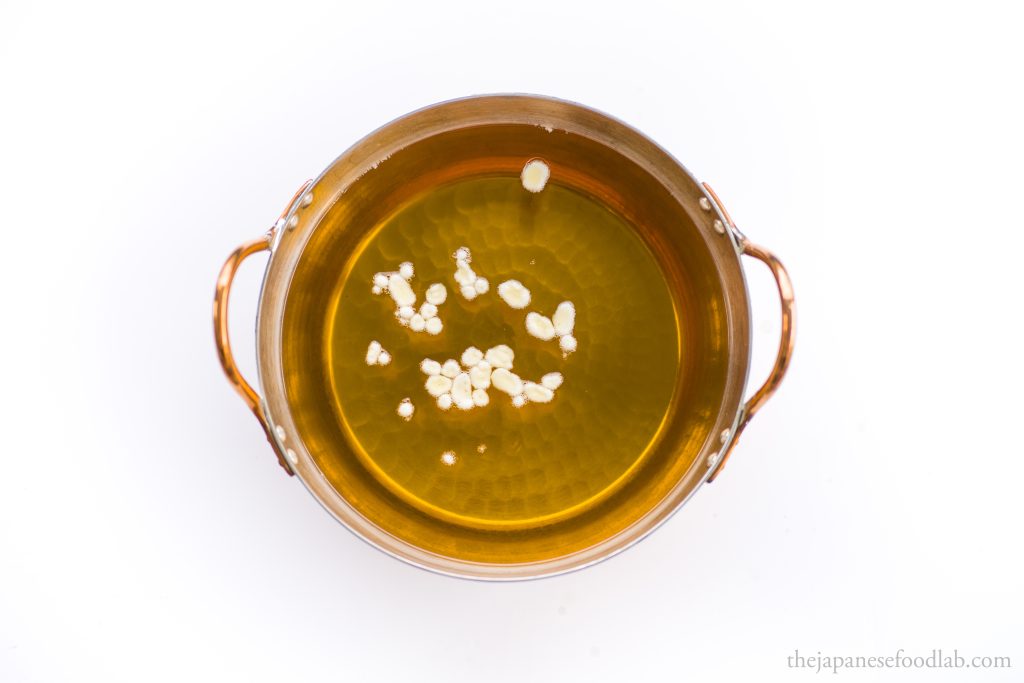
If you were to read or watch media promoting tempura establishments specifically targeted at a general audience, there is always a considerable amount of fanfare around how many years the chef has apprenticed for and how they’ve trained for so long that they can judge the temperature of the oil without a thermometer.
Whilst we strongly believe in the value of practice to develop intuition when cooking, whether that is making tempura or growing koji, we strongly believe in utilizing the best technology available. This is especially when it greatly improves the accuracy and consistency of our food. We therefore encourage everyone to use a thermometer to measure your oil temperature whenever possible.
But this also led us to a question, is there an accurate way to judge the temperature of frying oil without a thermometer? After some research and testing, we can confidently conclude that it’s possible, especially if using tempura batter. There are two main ways touted by tempura chefs by which it is possible to estimate the temperature of your frying oil. The first way is by submerging a chopstick into the oil and seeing how much it bubbles, whilst the second way is to sprinkle a few drops of tempura batter into the oil and see how it reacts. As it turns out, it’s much more accurate to use the batter technique over the chopstick technique. From our testing, we have concluded that this is because of the heat specific capacity of water, which is how much heat does water need to absorb to increase in temperature by one degree celsius.
When deep frying, the bubbles that appear to be released from the food as it fries is actually water moisture in the batter or food that has been heated up to its boiling point at 100°C/2121°F, thus evaporating off as steam. As the steam has nowhere to go, it rises through the oil as bubbles. As water has a high specific heat capacity and tempura batter consists largely of water, it takes a large amount of heat to heat up the batter to boiling point. More importantly, the higher the temperature difference between the oil and batter, the higher the rate of heat transfer.
At lower temperatures, drops of batter in the hot oil will first sink to the bottom for quite a while as the rate of heat transfer from the oil to the batter is low. Once the water in the batter reaches boiling point, the steam gets released as bubbles, which causes the batter to rise to the surface. The opposite occurs at higher oil temperatures. Because of the higher rate of heat transfer at higher temperature differences, the moment the batter hits the oil hot, the water in the batter almost instantly reaches boiling point, starts to steam, and floats to the top without even sinking.
By building an intuition through practice, tempura chefs can judge the temperature of the oil just by how long it takes the batter to release bubbles and rise to the surface of the oil. Below is a rough indication of how you can expect the batter to act:
140°C/284°F- the drops of batter sink to the bottom of the pot and may not rise to the top. If they start to rise, it’ll be after more than 10 seconds.

150°C/302°F- the drops of batter sink to the bottom of the pot. You may notice some pieces of batter flip over after a few seconds and rise at around the 10 second mark.
160°C/320°F- the drops of batter start to rise immediately after they touch the bottom of the pot.

170°C/338°F- the drops of batter sink about midway down the bottom of the pot before rising.

180°C/356°F- the drops of batter don’t sink but immediately start bubbling on their oil’s surface.

190°C/375°F- the drops of batter bubble vigorously on the oil’s surface, sometimes splitting into even smaller pieces.
